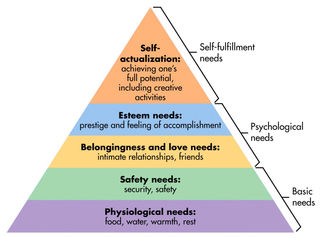Don’t let tech safety slip
The group of parents now raising tweens is the last to grow up — basically — without the Internet.
The good news is that, having received our first email addresses on dinosaur systems as college students, we DO know how the web works.
We all have Facebook (well almost all of us), plus most of its cousins. We’re hooked on getting answers to questions instantly as well as the ease of texting versus calling or — oh, please — talking face to face.
We know, too, of the web’s dark corners — limitless pornography, angry gamers, false information, lurkers and trolls.
This puts today’s parents in a crazy sort of limbo: I get it, I use it, I’m scared to death of it when it comes to my kids.
There’s also inappropriate content, predators, cyberbullying and technology addiction. And that’s not to mention the risk of growing up without knowing how to communicate verbally and always needing to know an answer or order that product — instantly, now, yesterday, if possible.
What’s a parent to do?
While you can and should limit use of the Internet in a way that’s age-appropriate and encourages other activities — such as participating in sports, reading books and playing outside — you can’t keep your child from going online forever.
In fact, complete avoidance could do more harm than good.
“Parents shouldn’t focus on instilling fear of the Internet in the child. Instead, start a conversation about technology and the Internet in today’s world,” said Karina Hedinger, a training and education coordinator for the Minnesota Crimes Against Children Task Force, a group led by the Minnesota Bureau of Criminal Apprehension.
Much like your family rules for exploring the neighborhood, true online safety comes from preparation and communication. (Check out the AAP’s new screen-time recommendations in this article’s sidebar.)
Tips for parents
Don’t freak out. Teaching your kids to fear the Internet isn’t going to keep them safe.
Do talk. Discuss the proper use of websites and what behaviors are inappropriate. Discuss the dangers in a non-threatening way.
Ask. Get your kids talking, too, so you’re not just in boring lecture mode. What do you most like to do online? What if someone online asked you to meet?
Befriend! Sure, you can have a Facebook or Instagram account … if you make me your first friend.
Be a watchdog. “Monitor, monitor, monitor. Monitor what your children are doing on all technology. Have daily conversations about being safe and keeping information safe,” Hedinger said. Be aware that you can set up “restrictions” on various devices (under Settings) to block or allow specific websites or types of content. You can also set blanket permissions based on age ranges. Also know that the top three internet browsers — Mozilla Firefox, Google Chrome and Apple Safari — offer settings and add-ons to help make your kids’ online experience’ more age-appropriate. There are even kid-safe browsers for a variety of age ranges. (See Page 33 to learn more.)
Limit locations. Keep the family computer in a communal space in the home. Insist that all phones go to charge or “rest” in a designated location at a certain time each night (not your kid’s bedroom).
Get an all-access pass. Though most parents wouldn’t read a child’s diary (at least not without cause for concern), many parents today reserve the right to read their kids’ phones each night after they’re placed in a designated “rest” location. Why? A diary is private by nature, and one might argue that everyone is entitled to his or her own private thoughts. But when it comes to living life on Instagram — where children can easily “go public” with things that perhaps should be private — the rules are bit different. Phone reading not only keeps parents involved, but it also helps kids practice better behavior (or self-censoring) if they know Mom or Dad might take a peek.
Research and explore. The list of apps you should know (and perhaps even know how to use) is honestly too long to name and goes beyond what you might think (SnapChat, Tinder, Musical.ly, Kik and the like). Did you know there are actually apps to hide apps? Yep. And there’s also a whole language developed to keep parents clueless. Deep breath. It’s going to be OK. But do study up! Talk to other parents as often as you can (ideally with kids a bit older than yours) and make friends with commonsensemedia.org, an indispensable website and app for evaluating all media.
Think beyond your home. Which friends have smartphones? Which friends use SnapChat? Would your child’s friends be willing to create an account in your child’s name to get around your rules? What are the rules at the neighbors’ house, where your kid spends half his time?
Make your expectations clear. Setting up formal house rules can help you stand firm in your decisions around digital media. Check out the new, free Family Media Plan tool from the American Academy of Pediatrics — at healthychildren.org — for help creating written guidelines for your entire family. If your child is receiving a smartphone this year for the holidays, you might want to customize one of the many mobile phone contracts online such as those at connectsafely.org and joshshipp.com as well as Gregory’s iPhone Contract written by author Janell Burley Hofmann for her 13-year-old son. Hofmann is the author of iRules: What Every Tech-Healthy Family Needs to Know About Selfies, Sexting, Gaming and Growing Up (janellburleyhofmann.com).
Tips for teens and tweens
Be discrete. The saying goes, “If you would feel uncomfortable with something plastered on a billboard, don’t share it on the Internet.” Personal information should never be shared in public forums. Turn off location services for most apps, and set them to “On While App is Running” for things that make sense, like navigation programs.
Be private. Gaining scores of fans and followers might feel like popularity — but it’s really just broadcasting a bunch of stuff that could embarrass you someday. Would you invite your whole block over to watch you lip sync in your pajamas? If the answer is “no,” reevaluate your public social media “brand.”
Know real people. You should be friends with someone in real life before being friends online. And you should spend screen-free time with your real-life friends.
Trust your gut. If something feels scary, weird or inappropriate, it probably is. If you feel tempted to hide something on a technological device from your parents, you probably shouldn’t.
Tell. If you see something inappropriate, violent, suspicious or mean online, talk to your parents or another adult you trust.
Be skeptical. It might be normal for an adult to mentor a child or teen, but it’s never normal for an adult to seek a relationship as a peer or romantic partner with a child or teen. Also note that online, a person can say they’re anyone or anything. An adult can easily claim to be 15.
Shut it down. In cases of cyberbullying, be a heroic bystander and report bad behavior when you see it. If you’re the victim of cyberbullying, shut down your device, walk away and talk face to face with someone who cares about you.



